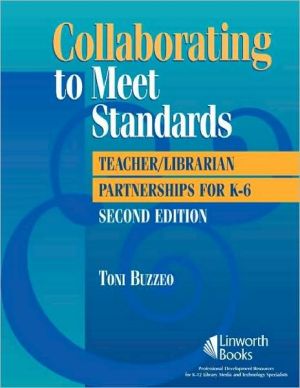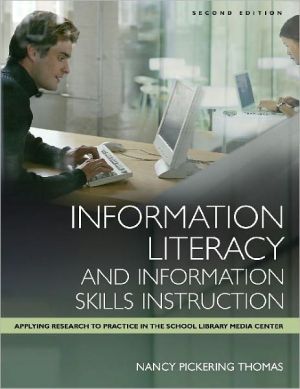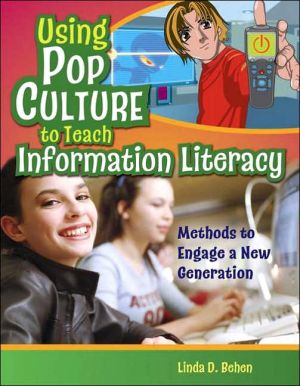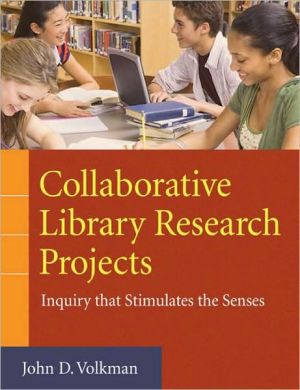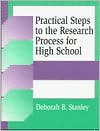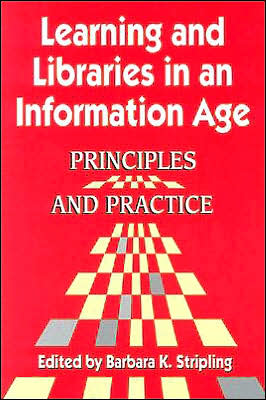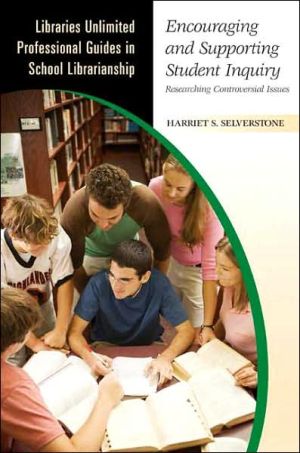Collaborating to Meet Standards: Teacher/Librarian Partnerships for K-6
Today's focus on literacy and accountability makes this book a must-have for teachers and librarians who want to learn to collaborate to improve student learning in grades K-6. Learn to envision, plan, teach, and assess in partnership with colleagues to positively impact student learning. Be ready to teach these 16 fully collaborative units that have been successfully implemented nationwide. These practical, standards-based units are just what teachers and librarians need to work together to...
Search in google:
Today's focus on literacy and accountability makes this book a must-have for teachers and librarians who want to learn to collaborate to improve student learning in grades K-6. Learn to envision, plan, teach, and assess in partnership with colleagues to positively impact student learning. Be ready to teach these 16 fully collaborative units that have been successfully implemented nationwide. These practical, standards-based units are just what teachers and librarians need to work together to give students the help they need to achieve and succeed. Your lessons will never be the same once you begin the powerful and beneficial practices that Toni Buzzeo spells out so clearly. School Library Journal This edition addresses the assessment-driven educational environment of the No Child Left Behind Act. In the first section, Buzzeo focuses on the benefits of an involved school librarian to the educational process and how best to achieve this collaboration. She includes a template for collaborative planning and instruction. Sample lessons for specific grades from librarians around the United States complete the book. Practical suggestions and examples from school librarians across the country appear in separate text boxes. But it all feels a little like preaching to the converted. While most librarians know how important they are to their schools, it is the school community and administrators who often need to become more aware of the valuable contribution a flexibly scheduled, open-access library media center can offer the school and its students. Numerous studies (some cited here) show the benefits to test scores of an active library media center, yet some of the librarians in this book discuss changing their roles to literacy instructor in order to prove their worth to the other teachers, and to avoid "being seen as irrelevant...[with] their budgets...reduced or their positions eliminated." It is a difficult balance to achieve, and Buzzeo gives worthwhile advice on maintaining this delicate juggling act.-Jane Barrer, PS/IS 111 Adolph S. Ochs School, New York City
IntroductionviiChapter 1Collaboration: Where We've Been--Where We're Going1Setting the Stage1New Roles2The Taxonomies2The Library Media Specialist's Taxonomy by David V. Loertscher2National Library Power Program3Collaboration and Information Power4Collaboration and Job Descriptions4The New Frontier5Resources5Chapter 2Collaboration: How it Looks and Who it Benefits7Examining the Definitions7Assessing the Benefits8Benefits to Administrators9Benefits to Library Media Specialist9Benefits to Teachers9Benefits to Students9Keith Curry Lance and Student Achievement Studies10Resources11Chapter 3Collaboration: The Ideal and Its Many Variations13Factors for Success13Overcoming Roadblocks to Success14The Role of the Administrator14Time and Scheduling16School Culture18Working with Restrictions19Resources21Chapter 4Using the Template23Elements of the Template23Header23Grade Level23Unit Overview23Time Frame23Content Area Standards23Information Power Information Literacy Standards and Indicators23Cooperative Teaching Plan24Resources24Product or Culminating Activity24
\ From the Publisher"An extensive revision of the first edition, this excellent sourcebook provides an in-depth introduction to collaboration, which will help new and veteran library media specialists and teachers. It addresses the impact of No Child Left Behind, as well as the history, benefits, and roadblocks of collaboration. Quotes from library media specialists and other professionals dot these beginning chapters. The bulk of the book consists of collaborative units, using a standard template. With an emphasis on state standards, these examples represent some exemplary collaborations across the United States. The units will provide readers with activities, timeframes, resources, assessment tools, and adaptations that can be readily used. Each unit includes handouts and rubrics. Many facets of this book make it easy-to-use: the grade level and subject for each unit listed in the table of contents, a table of figures, a matrix of learning activities by content standard, and a resource list. For library media specialists who wish to collaborate with teachers, this book will be a must-read. For those who already collaborate with teachers, it will provide examples of what other teachers have done and examples of handouts and rubrics which could be adapted to other units. Index. Highly Recommended."\ -\ Library Media Connection\ \ \ \ \ \ School Library JournalThis edition addresses the assessment-driven educational environment of the No Child Left Behind Act. In the first section, Buzzeo focuses on the benefits of an involved school librarian to the educational process and how best to achieve this collaboration. She includes a template for collaborative planning and instruction. Sample lessons for specific grades from librarians around the United States complete the book. Practical suggestions and examples from school librarians across the country appear in separate text boxes. But it all feels a little like preaching to the converted. While most librarians know how important they are to their schools, it is the school community and administrators who often need to become more aware of the valuable contribution a flexibly scheduled, open-access library media center can offer the school and its students. Numerous studies (some cited here) show the benefits to test scores of an active library media center, yet some of the librarians in this book discuss changing their roles to literacy instructor in order to prove their worth to the other teachers, and to avoid "being seen as irrelevant...[with] their budgets...reduced or their positions eliminated." It is a difficult balance to achieve, and Buzzeo gives worthwhile advice on maintaining this delicate juggling act.-Jane Barrer, PS/IS 111 Adolph S. Ochs School, New York City\ \ \
